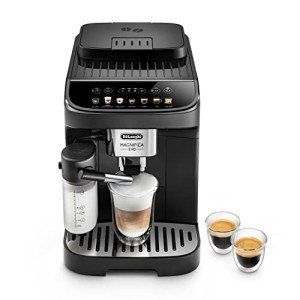The Ultimate Guide to Whole Bean Coffee Machines
In an age where coffee enthusiasts have become increasingly critical, the option of a coffee machine has actually ended up being more pivotal than ever. Whole bean coffee machines have become a favorite among major coffee drinkers, enabling them to draw out the best flavors from coffee beans. This article explores the complexities of whole bean coffee machines, exploring their features, benefits, and considerations for the devoted coffee enthusiast.
What is a Whole Bean Coffee Machine?
A whole bean coffee machine is designed to grind coffee beans prior to brewing, making sure maximum freshness and flavor extraction. Unlike traditional coffee machine that count on pre-ground coffee, these machines include a grinder, which allows the user to pick the grind size matched to their developing approach, from espresso to French press.
Advantages of Whole Bean Coffee Machines
- Freshness: The main advantage of using whole beans is that they retain their flavor longer than pre-ground coffee. Grinding right before brewing protects the aromatic oils that add to the overall taste profile.
- Modification: Many whole bean machines enable users to adjust grind settings, water temperature level, and developing time to develop a customized cup of coffee that meets specific preferences.
- Quality assurance: Whole bean coffee machines empower users to choose high-quality beans from various sources, making it simpler to check out unique flavor profiles.
- Adaptability: These machines accommodate various brewing approaches, allowing users to craft espresso, drip coffee, or specialty brews with ease.
- Convenience: Integrated grinders streamline the coffee-making process, decreasing the need for extra devices and reducing cleanup.
Key Features to Consider
When choosing a whole bean coffee machine, a number of functions ought to be thought about:
Grinder Type:
- Burr vs. Blade: Burr mills offer a more consistent grind, which is essential for consistency in flavor, whereas blade grinders tend to produce irregular grinds.
- Brew Method Compatibility: Ensure the machine can accommodate the brewing technique preferred (e.g., espresso, pour-over, French press).
- Capacity: Consider the hopper size for holding coffee beans; larger capabilities imply less frequent refilling.
- Interface: Look for machines with instinctive controls, enabling users of all ability levels to run them easily.
- Upkeep: Machines that are easy to tidy and maintain will conserve time and guarantee the durability of the device.
- Material Quality: Stainless steel and high-grade plastic deal sturdiness, while machines with glass elements tend to be less durable.
Popular Whole Bean Coffee Machines
| Brand | Model | Mill Type | Capacity (Cups) | Features | Price Range (₤) |
|---|---|---|---|---|---|
| Breville | BES870XL Barista Express | Burr | 8 | Espresso machine, steam wand | 600 - 700 |
| De'Longhi | EC702 | Pump | 10 | Dual boiler system, stainless-steel | 300 - 400 |
| Cuisinart | DCC-3200P1 | Blade | 14 | 24-hour programmable, drip coffee | 50 - 100 |
| Rancilio | Silvia | Burr | 2 | Expert feel, steam power | 700 - 800 |
| Hamilton Beach | 49980A | Combined | 2 | Single-serve, versatile developing | 30 - 50 |
How to Make one of the most Out of Your Whole Bean Coffee Machine
To achieve the very best outcomes with a whole bean coffee machine, think about the following ideas:
- Quality Beans: Always choose high-quality, fresh beans that fit your taste.
- Grind Size: Adjust the grind size based on the brewing approach. Finer grinds are suitable for espresso, while coarser grinds work much better for French press.
- Developing Temperature: Water temperature need to typically be between 195 ° F and 205 ° F (90 ° C -96 ° C) for ideal extraction.
- Water Quality: Use filtered water for the very best flavor and to extend the machine's life-span.
- Maintenance Schedule: Regularly clean the grinder and machine to prevent residue buildup and ensure constant performance.
Frequently Asked Questions about Whole Bean Coffee Machines
1. Is a whole bean coffee machine worth the investment?
Yes, if you value the freshness and taste of your coffee, investing in a whole bean coffee machine is useful. It enables a richer and more aromatic cup of coffee compared to pre-ground choices.
2. How do I clean my whole bean coffee machine?
The majority of machines come with cleansing guidelines. Typically, you'll require to remove the grinder, tidy the hopper, and run a cleansing cycle with water. Usage brushes specifically created for this purpose.
3. Can I use pre-ground coffee in a whole bean machine?
A lot of whole bean coffee machines are specifically developed for whole beans; nevertheless, some may enable you to utilize pre-ground coffee. Seek advice from the maker's standards.
4. What is the best grind size for espresso?
A fine grind is typically chosen for espresso. Nevertheless, experimentation can help find the best grind size that matches your taste choices.
5. How often should Bean To Cup Machines change the coffee beans?
For optimal freshness, it is encouraged to utilize coffee beans within 2 weeks of opening after they have actually been roasted. Shop them in an airtight container far from light and moisture.
A whole bean coffee machine can raise the coffee experience, supplying freshness, customization, and superior flavor. With many options available, prospective purchasers can find a machine that fits their way of life and coffee preferences. By thinking about the aforementioned functions, ideas for optimization, and keeping a consistent cleaning routine, users can relish every cup of newly brewed, aromatic coffee for several years to come. Whether for personal use or entertaining visitors, buying a whole bean coffee machine is a step towards coffee excellence.

